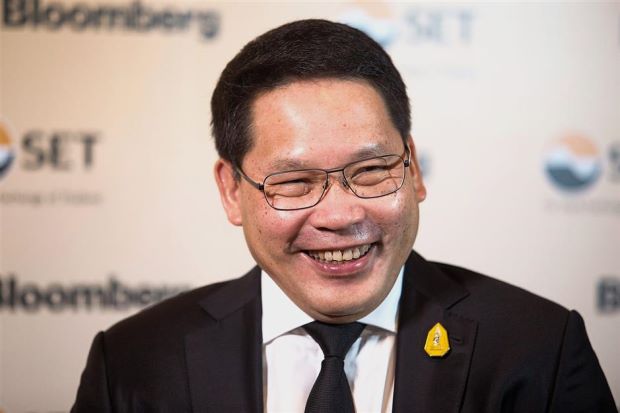Thailand says US$44bil project can link to Obor
SINGAPORE: Thailand said a US$44bil plan to add infrastructure and upgrade industry on its eastern seaboard can link up with China’s Belt and Road Initiative, as part of a push to encourage economic growth.
The Eastern Economic Corridor (EEC) project could be beneficial for China and the rest of South-East Asia, apart from bolstering Thailand’s outlook, Industry Minister Uttama Savanayana said in a Bloomberg Television interview in Bangkok.
“It’s very natural, logical, and mutually beneficial for the EEC to link up with One Belt, One Road (Obor), and other regional initiatives like the RCEP or even TPP if that goes ahead,” Uttama said, referring to the Association of South-East Asian Nations initiative known as the Regional Comprehensive Economic Partnership, and the struggling Trans-Pacific Partnership trade pact.
Thailand’s economy has been subdued since the military seized power in 2014 and the government is seeking to speed up infrastructure projects to boost the outlook.
The eastern seaboard plan targets 1.5 trillion baht (US$44bil) of investment from 2017 to 2021 for airport expansion, new railways and cities, port development and spurring modern industry.
Uttama expects about 80% of funding from the private sector and the rest from government.
“We are pretty much on track,” he said. “So far this year, it has been a year of preparation for the EEC.
“We have been putting in place the overall plans. Next year we are expecting to see actual investments taking place.”
The EEC Act, which institutionalizes the project and gives it a legal basis, will go before the National Assembly soon, Uttama said. South-East Asia’s second-largest economy also realizes it needs to upgrade workforce skills to support the EEC, he said.
The Belt and Road Initiative is Chinese President Xi Jinping’s signature plan to open trade routes and build infrastructure from Asia to Europe to Africa.
Last month, Xi outlined plans to direct as much as 840 billion yuan (US$123bil) to construct roads, railways, ports and pipelines in more than 60 countries.
“Today, many countries can’t afford to just think about themselves in terms of sustainable development,” Uttama said. “We need to work together and think about the region as a whole.”
Thailand has been relying on exports and tourism for drive its economy as industrial overcapacity crimps private investment. Growth lags behind neighbours such as Indonesia and Malaysia, with a stronger baht adding to risks by threatening to erode competitiveness.
Thailand has recently sought closer relations with China, such as in defense procurement and infrastructure development.
Just last week, Prime Minister Prayuth Chan-Ocha used his absolute power to hasten a delayed US$5.2bil high-speed rail joint venture with China.
He later rejected criticism that he overrode due process and said the order was in the nation’s best interests.
The EEC plan covers Rayong, Chachoengsao and Chonburi provinces.
Under the project, Thailand will aim to take on Singapore’s dominance in aircraft maintenance, repair and overhaul as part of a US$5.7bil upgrade of U-Tapao International Airport.
The increased terminal capacity would also ease the strain of coping with an annual influx of more than 30 million tourists.
Apart from the airport, the EEC project calls for US$4.5bil investment in high-speed rail, US$11.5bil for new cities and US$14bil for industry.
Thailand’s King Maha Vajiralongkorn ratified a military-backed constitution in April, paving the way for a return to some sort of democracy in 2018. – Bloomberg
Source: http://www.thestar.com.my/business/business-news/2017/06/23/thailand-says-us44bil-project-can-link-to-obor/#53XGpqd2BMEWY63Q.99


 Thailand
Thailand




